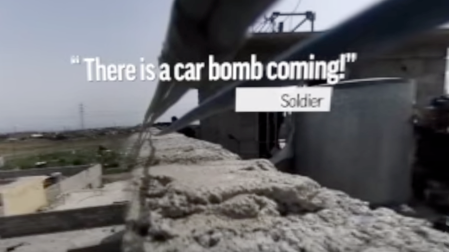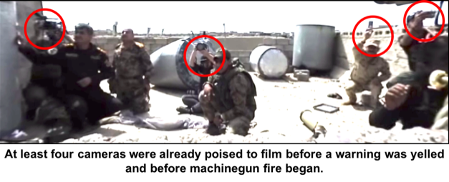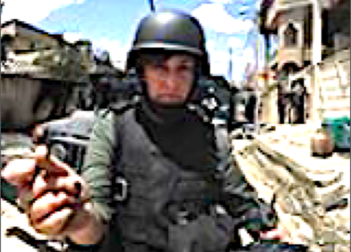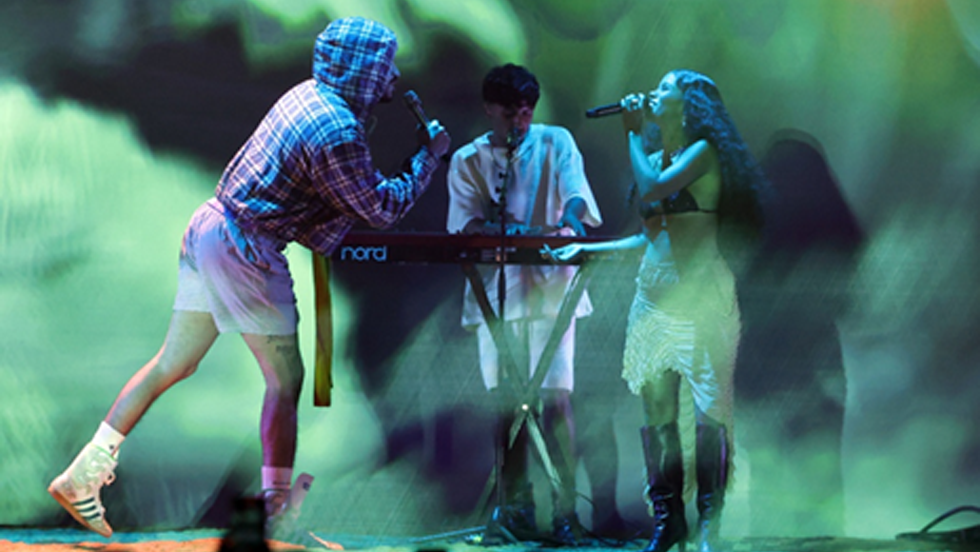The 360-Degree News Video Siren Song
The 360-degree, virtual reality video melody is so alluring that it has enchanted the likes of the Associated Press, New York Times,CNN, The Washington Post andmany other major news outlets. 360 video’s chief proponents are Google and Facebook, who provide cash to news outlets to post immersive, 3D video news stories online. It’s touted as the “next big thing” in journalism.

The Google-Facebook duopoly provides publishers and broadcasters cash to post 3D video news stories online. Facebook’s Mark Zuckerberg—the same one whose company many claimed facilitated theRussian fake newsattack on Hillary Clinton—is investingbillions in 360 video. The two social media giants get cheap news content to draw eyeballs to their own 360 virtual reality platforms.
Using a mouse, touchscreen or special goggles for the deepest immerse, news consumers can navigate inside digital scenes of ostensibly major news events. They can bypass a reporter’s selective—perhaps biased—shooting and editing and perform journalistic duties on their own.
The fact that even reputable news organizations are spending time and money to fiddle with 360 video signifies a desperation to cope with digital disruption. Even though consumers have already rejected passive, big-screen 3D for sports and entertainment programming, many online news providers are giving small-screen, interactive 3D a go.
The Associated Press puts the advent of 360 video up there with the invention of television: “The printing press allowed people to read each other’s ideas; radio allowed us to hear them; television allowed us to see them and immersive media is now allowing us to feel as if we’re actually with others as they speak” (from AP’s “A guide for storytellers in a world of immersive 3-D content.”).
“The era of 360-degree video is just beginning, but already we’ve seen its potential and begun to harness the strength that it offers our storytelling,” said Jaime Holguin, the Associated Press’s manager of news development. Indeed, the AP’s 360 video “House to House: The Battle for Mosul,” is held out as a shining example of journalism that “brought viewers to the frontlines of the battle against ISIS.”
STAGED? FAKED? “THE BATTLE FOR MOSUL” 360 STORY
The professional video industry's #1 source for news, trends and product and tech information. Sign up below.
Be prepared to work your butt off searching for AP’s star 360 video story—“The Battle for Mosul”—to find what are supposed to be the most interesting or important scenes. You’ll need to constantly drag a mouse or move a finger on a screen, left and right, up and down. Many clips are so short you don’t have anywhere near the time to find whatever it is you might want or need to see. You are in control, but out of control.
You will not find any house-to-house fighting as promised in the headline. It may come off as unwieldy, even boring, compared with conventional 2D efforts by other news agencies like this piece by French station France 24, English broadcast,covering the same campaign.
The AP piece takes you back to the silent film era where you had to read subtitles to get part of the story. Scroll too far one way or the other, side-to-side or up-and-down, and you’ll miss AP’s captions. VR 360 advocates call this “dynamic storytelling.” It’s an expressionoriginally applied to using 360 video to immerse viewers in gaming and advertising experiences. Many news organizations apparently think if dynamic storytelling can sell products and video games, than it can also sell news.

The most dynamic scene in the AP’s 3D Mosul piece comes at 3:04 that shows Iraqi soldiers on a rooftop. One yells (translated into text) “There is a car bomb coming!” You very quickly hear audio of machine gun fire, you might see some smoke and muzzle flashes if you scrolled to the right place, but you never see who is shooting and what they’re shooting at. After 20 seconds the video and audio fades to black as the machine gun continues firing.
The next scene in AP’s example of dynamic storytelling jumps to some Muslim soldiers bowing to Allah in prayer. The car bomb storyline simply vanished. There is no video of the car either during or after its purported attack. No caption explains how the attack ended. It was a story with a beginning, but no middle and no end.
“I did not film the vehicle, as it was outside of the camera’s field of view.” Maya Alleruzzo, the AP’s chief photo editor for the Middle East, explained via email. What did happen to the car? Did it even have a bomb? Was anyone killed? I asked.
Alleruzzo replied with another email: “I am unaware of what happened to the car. My team and I left the roof quickly to film civilians fleeing on the street below.”
Her answer defied logic. Even if her 360 camera missed the shot, why not at least take a peek and see what happened to the car? Maybe shoot wreckage video with a 2D camera, or, at a minimum, ask one of the soldiers what happened.
So, I asked another, more detailed question:
“Could it be you were snookered by the Iraqi troops who may have wanted to conjure up some action (machine gun fire) for your camera? I could see the street in the direction of the muzzle flashes and I could not see anything. Usually those jerry-rigged "car bombs" are stopped or they explode. I don’t think they’re on joy rides. Had I been a reporter on site I would have looked, I would have at least asked questions about it and I doubt I would have gone down to the street where it could still present a threat if not fully disabled and disarmed. It seems like it was a fake attack.”
No response.
In the meantime, I had already left a phone message requesting an interview with Francesco Marconi, AP’s automation and artificial intelligence manager and chief 360 video advocate. He declined returning the call, so I copied him on my email exchange with Alleruzzo and asked for a comment.
Still nothing.
Finally, I emailed AP’s media director, Lauren Easton, asking for AP’s position on the piece. I explained that the machine gun fire appeared to be staged, that it is a fake or imaginary attack:
“Allerzzo’s response that she did not bother to look or ask about the results of the attack seems preposterous, but your office may have a more plausible explanation,” I wrote. “Also, the headline says the video is ‘riveting’ and ‘harrowing.’ Would you point out which scenes are ‘riveting and harrowing?’ Do you see any house-to-house fighting captured on video?”
Easton provided a one-line reply and declined further comment.
“AP stands by the video, which speaks for itself.”
If AP leaves the video speaking for itself, then it certainly was a faked attack. The video says so. The camera was positioned just above the machine gun and had a better view of the street. Yet the video shows no vehicle.
But the video isn’t finished talking. Thanks to the 360 shot, the camera picks up people on the rooftop and records what they’re doing. It turns out that besides the stationary 360 camera, there were at least four other cameras, all 2D, all being used the old-fashioned, non-dynamic pointy-and-shoot way.
All four cameras were to the ready before the solider yelled, “There is a car bomb coming!” and before the machine gun began firing. In other words, all four cameras were either filming or ready to film the action before the purported car was supposedly spotted.

Fig. 1

Fig. 2
The video shows what the four photographers did. What appear to be two Iraqi soldiers (Figs. 1 & 2) are holding their cellphone cameras high, pointed in the direction of the street, before the warning was sounded and before the firing commenced. Neither rushes to the ledge, but, instead, both casually pan to their right, away from the line of fire.
Across from the two smartphone videographers are what are likely two reporters. One of them (Fig. 2) holds a DSLR still/video camera up high, maybe to shoot toward the street. It could be Maya Allerzzo herself. But instead of going forward to the ledge to get a better view, she crouches down and aims the camera lower, directly at the 360 camera. Then she begins crawling away from the action. If it was her, she could have used her DSLR camera to photograph or video the purported vehicle that was out of the 360-camera’s range.
Another cameraperson (No. 3) holds up a video journalist-style, two-handled camera rig, pointing it toward the machine gun. But instead of moving forward to the ledge, to get a better look at the street, the videographer turns and walks away, showing no fear of a bomb that could explode at any second.

Maya Allerzzo
Finally, as the attack segment ends, one of the two photographers on the right side of the video, No. 4, does walk to the ledge to get what would have been the best shot of any oncoming car bomb. But as soon as he gets there he pans the camera to his right, in the direction of the 360 camera and machine gun. Then the audio fades out and the video fades to black.
The story the video does tell is not about war action, but about journalism ethics.
THE TEMPTATION TO STAGE
OK, even conventional videographers and mobile journalists are tempted to shoot staged video (or semi-staged, where the journalist does not direct the action, but the news subjects act out for cameras they know are there). It’s just that 360 VR cameras really lend themselves to staged video because they are more difficult to place. They cannot be easily concealed because they have to be in the middle of the action, not at the periphery, keeping some distance, where they would act more like objective observers.
Greenbuzz, a video production company blog, wrote that 360 video in journalism has been criticized for having potential ethical issues. “Some believe that the use of it includes creating a ‘staged experience.’ This idea brings up concerns over whether the full range view of 360 video is staged unnaturally. Unnatural staging could result in a change in the authenticity of the story.”
The Washington Post defends 360 video, citing Donald Trump’s complaint that the media never showed massive crowds attending his campaign rallies. “Turn the cameras around!" he told reporters in the press pen. "Show the crowd!" “But our cameras were already turned around,” the Postreported. “To be more precise, we used a 360 camera to record everything, all around. If you've ever wondered what it's like to attend a Trump campaign event, this is as close as you can get without actually being there.”
It’s not just mainstream media enticed by the 360-video siren’s song. So are journalism schools and media publications. The Columbia Journalism Reviewproclaims that “the future is now with VR journalism.” “In traditional storytelling, journalists can steer the camera, decide where to focus, and even suggest where the audience should direct its attention. In virtual reality, participants can choose where to look when, and which questions they want answered, by inspecting the virtual environment at their own pace and from multiple perspectives.”
Many journalism schools have climbed onto the VR 360 bandwagonX—some with money from the big social media players; among them USC. A University of Southern California press release proudly announced that “(c)urrently leading the charge for 360-degree and virtual reality-based journalism…is Associate Professor Robert Hernandez, now entering his third year of teaching his trademarked virtual reality journalism class called ‘JOVRNALISM.’”
But is what USC calls “jovrnalism” just a gimmick? Or even journalism at all?
Cutting to the chase: Yes, it’s a gimmick. No, it’s not journalism. The news 360 video king is wearing no clothes. It’s among indicators that traditional news media are lost in a digital disruption wilderness and are willing to try anything to get out. Even by prostituting journalism.
Traditionally, journalists do the work, not news consumers. Reporters—based on training, experience and professional standards—are “news consumer surrogates,” seeking out news sources and scenes on behalf of consumers, gathering the most important facts and opinions and shooting video of the most relevant images. They cull out the mundane and less relevant. Their stories become highlight reels so consumers don’t have to watch or attend the whole game.
A 180 FROM 360’S ROCKY SHOALS
It’s time to silence the siren song and get back to basic journalism. Video news outlets should not waste time and money R&D’ing 360 VR on actual human beings rather than on focus group subjects. Online video news providers should have let Samsung, Google and Facebook crash onto 360’s rocky shoals without taking mainstream media with them.
And they will crash. 3D, even with immersive interaction and with news topics, works no better on small screens than big screens; probably worse. The potential audience needs to be much larger than just geeks with goggles.
Most—if not all—of the same new outlets that push 3D video haven’t even mastered television-news-proven, 2D video. Check it out. Go to the Washington Post and New York Times websites. How many of their daily, primary news stories are available in old-fashioned 2D video as well as text? Usually zero. What non-360 video that does appear is usually provided by outside news agencies, like Reuters and AP, and often poorly packaged at that. (Hint: if you’re going to pivot to video then pivot decisively, don’t just lean awkwardly.)
360 news video never made any sense. At a time of massive news media budget cuts and personnel layoffs, outlets should have been looking to lower, not increase production costs. At a time when news consumers are demanding more speed and more live reporting, outlets should have not have been going to slower, less flexible camera systems. At a time when mobility is big, outlets should have been looking for light and agile, not heavier and clumsier.
The news media’s obsession with 360 comes at a time when there are newer, but admittedly more boring systems and methods that are worth expanding, such as smartphone newsgathering, bonded cellular IP instead of microwave and satellite field-to-station transmissions and drone newsgathering. (To its credit, AP does support smartphone newsgathering and bonded cellular via its partnership with LiveU Inc.)
In other words, when it comes to 360, it’s time for the news media to do a 180.
